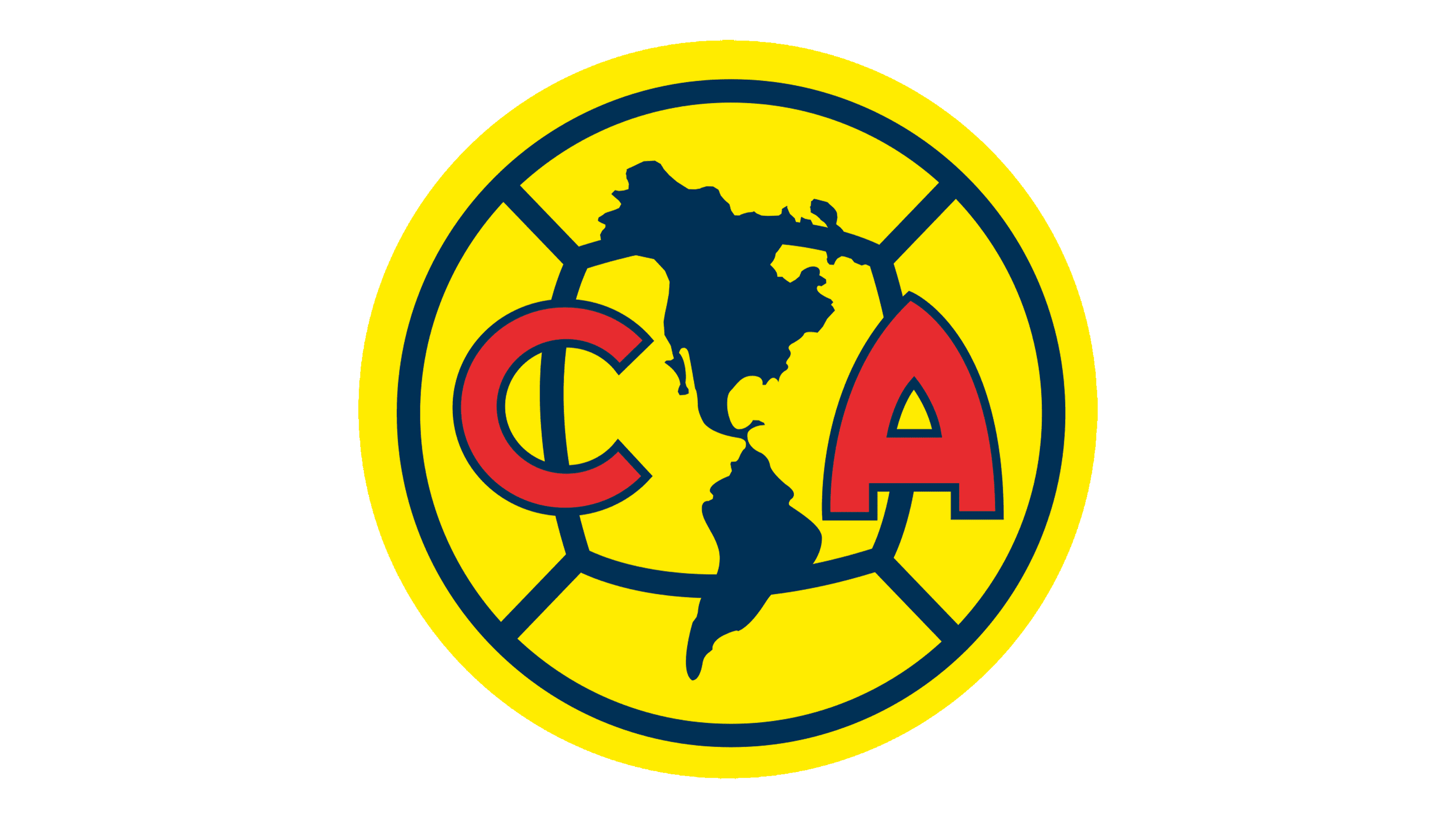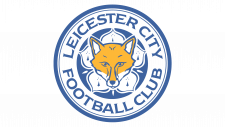Club America Logo
One of the most renowned and energetic soccer teams in Mexico is Club América. It is based in the nation’s capital. The team is often the talk of South and North American soccer fans and has truthfully deserved it. Its history is full of legendary players and winnings. Along with its biggest rival, Guadalajara, it has been known for never being relegated from the top flight. El Súper Clásico is the local nickname of the games between the two.
Meaning and History
Club America has a long history as they have been competing since 1916. The team appeared thanks to a union of two teams, one from the College of Mascarones and the other from the local parish, that wanted to create a stronger and more competitive group of soccer players. The team has many achievements to be proud of, including being the first Mexican team to play outside the country (1926) and the first to join the Copa Libertadores (1998). It also had nicknames. Initially, they were called Los Estudiantes. Soon, the name was replaced by Club Centro Union, which was their official name for two years since 1918, and then Los Azul-Cremas, which referred to their team colors. Other nicknames include Los Cnarious, Los Millonetas, and Las Aguilas (Eagles). Their official name appeared from the fact that it was Columbus Day when the squad official got together.
What is Club America?
Short for Club de Fútbol América, this is a soccer team that is known way beyond its country, Mexico. It has an impressive local record to prove its leadership in the country and ten international titles to earn respect beyond its borders.
1916
Stylized black initials of the club name became its first emblem. The designers used a font that resembled a wishbone typeface with barely rounded corners. The “C” was placed right on top of the “A”, which created a very balanced and almost symmetrical monogram.
1917 – 1918
An abstract image of a globe showing North and South America served as the base for the logo. It was done in two shades of yellow and had a thin black outline, which drew a connection to the black initials. The latter were spaced far apart and touched the opposite sides of the circle outline. It surely was an interesting design choice.
1919
This version has a lot in common with the original as it also created a geometric monogram. This time, the letters are not as easy to differentiate as they are formed by two “V”-like shapes placed perpendicular to each other. A round thin border completes the picture.
1920 – 1921
The new logo looked like a medallion with ancient symbols on it. It was done in black and white, which created a connection with some other versions. All the lines were of the same thickness, creating a cohesive image. It is not known for sure what the Aztec-stylized symbols mean, but the emblem looked bold and powerful.
1921 – 1938
The emblem designed in 1917 was brought back with barely noticeable modifications. The club used it for seventeen more years, making it one of its longest-used emblems that did not go through changes.
1923
1923 – 1925
1925 – 1926
1926 – 1938
1938 – 1946
The logo many got used to has undergone major changes and brought to a completely different level. The circle with the two continents and initials was placed on a triangle pointing downward. The latter featured a geometric pattern on the left and an eagle filling most of the background. The logo used red for the outline of the triangle and circle as well as the initials. A deep blue background allowed all the other elements, which were done in a light yellow, to stand out. The emblem reflected the confidence, courage, and excellence of the club.
1947 – 1949
The new logo looked a lot like the 1917 design. The border and continent outlines were redrawn and looked much bolder. In addition, the designers added a ball pattern, which featured thinner lines compared to the outer outline. The initials were now bold and placed closer together. They featured a red, which was introduced earlier.
1949 – 1957
Although the previous logo looked powerful, it was a bit overcrowded because all elements were quite bold and competed with each other. The issue was resolved by making the background a lighter yellow again. The continents and border, which now featured two lines, were also more refined. To make the team’s initials stand out even more, they were given a thin black outline. The ball pattern was slightly modified as well.
1957 – 1958
The updates introduced smoother, curved lines, both in the outlines of the continents and the ball pattern, which now looked very different. Although the designers kept the same font for the initials, they removed the outline, made them smaller, and instead gave them a darker shade of red.
1958 – 1959
The most noticeable change this time was a deeper shade of yellow for the background. In addition, the emblem now had a red outline to match the red lettering. The ball pattern used in the 1949 logo was brought back. There were some other minor changes, such as a less detailed outline of the continents.
1959 – 1967
The designers zoomed in on the portion where the two continents met to be more relevant to the location of the team. In fact, it was the first element that caught the attention in this emblem. In addition, they removed the black outline around the emblem and the letters.
1967 – 1970
The designers brought back the 1949 version of the logo with some modifications, including a wider ball pattern like in the 1958 version. The design looked professional and preserved the familiar team image.
1970 – 1974
This team logo looks lively as it features a more saturated yellow for the background. The red used for the letters is also brighter. The ball pattern is drawn using thin lines, which created some perspective and gave other elements a chance to stand out. The logo was also seen with inverted colors, where black was used for the background and yellow for the continents and outlines.
1974 – 1977
This logo is an exact copy of the logo introduced in 1967 with only one exception. The color palette was brighter and used darker yellow and dark blue instead of black. Similarly to the previous one, an inverted version was also used by the team.
1977 – 1981
It seems the fans loved a more colorful version of the logo, which is why the team created a “color” version of the 1970 logo. The yellow was saturated again, but the blue and red got much lighter compared to the previous color palette.
1981 – 1991
The team has redrawn the outline of the continents once again. Moreover, they were placed right between the letters, which was not typical for the Club America team. The color palette got brighter and the letters stood out against the background.
1991 – 1994
Although the previous version stayed with the team for ten years, it was decided to make some adjustments. The continents stayed between the letters, but the drawing got smaller. The outline around the letters also got thinner. The blue lines were replaced by black.
1994 – 1999
The team used a darker, more intense blue color and a thicker border around the emblem. It made the club appear more daring and confident. As in all other logos since 1970, the team also used an inverted version of the logo.
1999 – 2008
Although not many elements have been modified since the last change, the logo acquired a lighter feel. The outside outline was indented inwards, creating a double outline. The initials were not as wide as before.
2008 – 2009
Although an attentive eye will see changes in the outline of the continents, the most noticeable changes were done to the colors, which were muted a bit. In addition. The team initials did not have a dark outline anymore. It was replaced by a thin line of a darker red color.
2009 – 2010
More saturated colors made the logo look more serious and solid. Although the size of the letters was not changed, they appeared to be a more significant part of the emblem. There were no other noticeable changes.
2010 – 2017
The designers never seized to make adjustments to the team’s logo. Thicker lines were brought back once again. It looked strong and full of energy, just like the team it was representing.
2017 – Today
Not many changes were done this time, but they surely made the logo look more professional and refined. The most noticeable change was a more detailed drawing of the continents. The blue color now looked almost black. Finally, the yellow border around the emblem was now as thick as the dark blue one, making it look more intentional.
Font and Color
The original logo used a font that resembled a wishbone typeface. Soon, it was replaced by a font very similar to Nike Motto or Terminator. It was modified a bit each time the logo was updated, but the overall picture was preserved. Although the color shades have changed throughout the years, the team chose a bright, bold, energetic, and powerful color palette for its emblem. These were red, yellow, and blue.







































